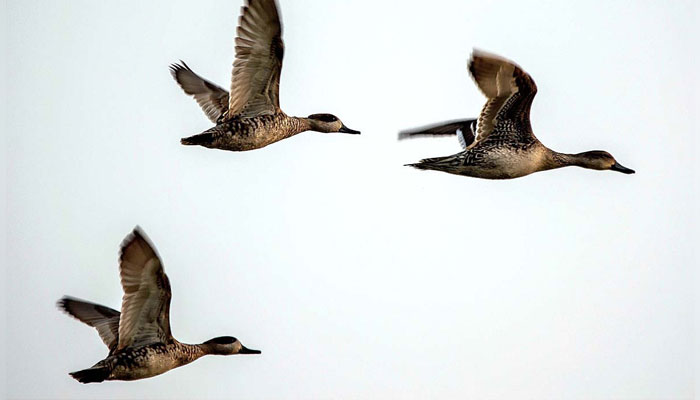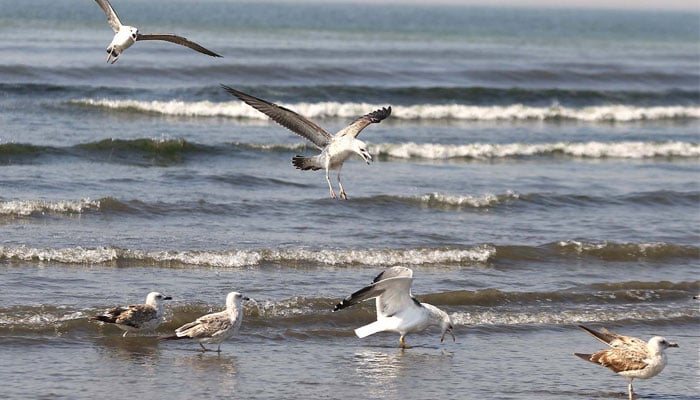Pakistan’s Arabian Sea coastline boasts many blue views, immaculate beaches, and rocky shorelines. It exhibits a stunning fusion of the natural beauty and the lively atmosphere.
Any time of year, visiting the nation’s many stunning locales is sure to delight, but nothing compares to the allure of the scenery when migratory birds use nature’s GPS to fly from all over the world to the coast.
During their yearly journey, migrating birds can cover thousands of miles, frequently following the same path with little change from year to year.
Every year, sheets of water turn into slabs of ice as the majority of the world’s seasons change to winter and the already-cold regions experience a gradual drop in temperature. Birds are also in danger due to this natural climate change, in addition to wild mammals.
But how can they figure out where to go? is the question.
The GPS of nature
Over thousands of miles, migratory birds frequently follow the same path year after year with little variation in their annual journey.
The Sindh Wildlife Department reports that studies have demonstrated that migratory birds pick up the skill of using genetic and heritable traits to train and determine their route from their parents or group adults.
However, the use of geographic markers and magnetic waves is of particular importance in travel techniques, while the consequences of losing one’s way can be the most dangerous.

The secrets of their amazing navigational skills aren’t fully understood, partly because birds combine several different types of senses when they navigate.
While discussing the navigation techniques used by birds, Brohi said: “The migration is initiated by adult or grown-up birds and the younger ones follow them. While travelling during the day, these birds use landmarks such as land, rivers, or mountains to determine where to go. Meanwhile, during the night, they use stars to navigate their way. Some birds even follow the Sun during the day.”
The sense of smell is also believed to be a factor in the migration patterns of certain species, including homing pigeons, waterfowl, and cranes.

As bird migration sounds like a big event, let us dive into the route these extraordinary birds use to pull off such a difficult yet necessary task.
”The harsh winters in colder regions force these birds to migrate, which is defined as the long-term, seasonal movement of birds between the wintering and breeding sites along the south and north flyways. Pakistan is a major destination for migratory birds from Russia, Siberia, China, and other Central Asian states, and its diverse ecosystems serve as vital rest stops for birds crossing global flyways. “Bird migration is an ecological event during which they travel to Pakistan via the Indus Flyway,” Javed Mahar, a conservator at Sindh Forest and Wildlife Department told Geo.tv. “This even happens when birds migrate from one place to another at regular intervals in search of warmth.”
Dr Mehrban Ali Brohi, a zoologist based in Islamabad, said: “It has been observed that birds generally migrate from northern (cold) regions to southern (warm) regions because of intense snowy weather and lack of food. Therefore, to protect themselves from harsh weather conditions, these birds migrate to the south.”
Birdwatchers also flock to Thatta’s Keenjhar Lake and Haleji Lake where these visitors find refuge during their seasonal migration which contributes to ecological balance and provides a unique opportunity to witness nature’s harmonious dance across Pakistan’s skies.
Indus Flyway
Flyways are flight pathways taken by migratory birds while moving between their overwintering quarters and breeding grounds.
“There are eight flyways in the world used by migratory birds to travel,” Mahar said. “Birds migrating to Pakistan use ‘International Migratory Bird Route Number 4’, also called the ‘Green Route’ and more commonly known as the Indus Flyway, which stretches from the Karakoram down to the Indus Delta in the south.”
The Central Asian Flyway, which spans the Eurasian continental regions between the Indian and Arctic oceans, includes the Indus Flyway Zone. It offers more comfortable weather for breeding and feeding.







